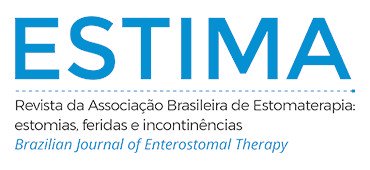PROPOSAL FOR A CLINICAL PROTOCOL FOR THE CONSERVATIVE TREATMENT OF URGE URINARY INCONTINENCE
Abstract
Objective: To present a proposal for a clinical protocol for the conservative treatment of urge urinary incontinence. Method: Experience report based on existing scientific evidence and clinical experience of authors who perform nursing consultations for people with urge urinary incontinence, outlined in accordance with the Brazilian Ministry of Health’s proposal for the elaboration of clinical protocols. Results: A clinical protocol was proposed with nursing diagnosis and interventions based on the North American Nursing Diagnosis Association (NANDA) and Nursing Interventions Classifications (NIC), with systematized steps to verify the presence of related factors or conditions associated with the diagnosis, namely: hyperactive pelvic floor, anxiety, constipation, urinary tract infection, low fluid intake, inadequate sanitary behavior, diabetes mellitus, pelvic organ prolapse, high consumption of potential bladder irritants and persistence of symptoms. Soon after, the actions that should be implemented by the nurse were described in detail. Conclusion: It is considered that the flow and detailing of the actions presented can be adopted by nurses in order to identify and treat people with urge urinary incontinence, thus minimizing the prevalence of the problem and promoting the quality of life of these people.
Downloads
Metrics
References
D’Ancona C, Haylen B, Oelke M, Abranches-Monteiro L, Arnold E, Goldman H, et al. The International Continence Society (ICS) report on the terminology for adult male lower urinary tract and pelvic floor symptoms and dysfunction. Neurourol Urodyn 2019;38(2):433-77. https://doi.org/10.1002/nau.23897
Abufaraj M, Xu T, Cao C, Siyam A, Isleem E, Massad A, et al. Prevalence and trends in urinary incontinence among women in the United States, 2005–2018. Am J Obstet Gynecol 2021;2(1):166.e1-12. https://doi.org/10.1016/j.ajog.2021.03.016
Lowenstein E, Jepsen R, Andersen LL, Laigaard J, Moller LA, Gade LB, et al. Prevalence of urinary incontinence among women with diabetes in the Lolland-Falster Health Study, Denmark. Neurourol Urodyn 2021;40(3):855-67. https://doi.org/10.1002/nau.24636
Al Kiymi MH, Al Belushi ZI, Jaju S, Al Mahrezi AM. Urinary incontinence among omani women: prevalence, risk factors and impact on quality of life. Sultan Qaboos Univ Med J 2020;20(1):e45-53. https://doi.org/10.18295/squmj.2020.20.01.007
Pedersen LS, Lose G, Hoybye MT, Elsner S, Waldmann A, Rudnicki M. Prevalence of urinary incontinence among women and analysis of potential risk factors in Germany and Denmark. Acta Obstet Gynecol Scand 2017;96(8):939-48. https://doi.org/10.1111/aogs.13149
Brasil. Ministério da Saúde. Protocolo clínico e diretrizes terapêuticas incontinência urinária não neurogênica. [Internet]. Brasília: Ministério da Saúde, 2020 [cited 3 aug 2022]. Available at: http://conitec.gov.br/images/Protocolos/Publicacoes_MS/PCDT_Incontinencia-Urinria-no-Neurognica_Final_ISBN_20-08-2020.pdf
Cruz JMA, Lisboa LL. Impact of urinary incontinence on quality of life and its relationship with symptoms of depression and anxiety in women. Rev Salud Publica 2019; 21(4):e150016. https://doi.org/10.15446/rsap.V21n4.50016
Saboia DM. Impacto dos tipos de incontinência urinária na qualidade de vida de mulheres. Rev Esc Enferm USP 2017;51:e03266. https://doi.org/10.1590/S1980-220X2016032603266
European Association of Urology. Pocket Guidelines. Arnhem: European Association of Urology 2018.
Hoeld M, Bauer S, Eglseer D, Everink I, Gordon A, Lohrmann C, et al. Urinary incontinence prevalence and management in nursing homes in Austria, , the Netherlands, Turkey and the United Kingdom: A multi-site, cross-sectional study. Arch Gerontol Geriatr 2022;103:104779. https://doi.org/10.1016/j.archger.2022.104779
Brasil. Ministério da Saúde. Guia de elaboração de protocolos clínicos e diretrizes terapêuticas: delimitação do escopo. [Internet]. Brasília: Ministério da Saúde, 2019 [cited 5 may 2022]. Available at: https://bvsms.saude.gov.br/bvs/publicacoes/guia_elaboracao_protocolos_delimitacao_escopo_2ed.pdf
Herdman TH, Kamitsuru S, Lopes CT. Diagnósticos de Enfermagem da NANDA-I: Definições e Classificação - 2021-2023. 12. ed. Porto Alegre: Artmed, 2021.
Classificação da Internacional de Enfermagem (NIC). Rio de Janeiro: Guanabara Koogan, 2020.
Funada S, Watanabe N, Goto T, Negoro H, Akamatsu S, Ueno K, et al. Cognitive behavioral therapy for overactive bladder in women: Study protocol for a randomized controlled trial. BMC Urol 2020;20:129. https://doi.org/10.1186/s12894-020-00697-0
Khoury B, Sharma M, Rush SE, Fournier C. Mindfulness-based stress reduction for healthy individuals: A meta-analysis. J Psychosom Res 2015;78(6):519-28. https://doi.org/10.1016/j.jpsychores.2015.03.009
Kabat-Zinn J. Full catastrophe living: Using the wisdom of your body and mind to face stress, pain, and illness. Nova Iorque: Delacorte, 1990.
Brasil. Ministério da Saúde. Política nacional e práticas integrativas e complementares no SUS: atitude de ampliação de acesso. [Internet]. Brasília: Ministério da Saúde, 2015. [cited 2 aug. 2022]. Available at: https://bvsms.saude.gov.br/bvs/publicacoes/politica_nacional_praticas_integrativas_complementares_2ed.pdf
Luo Y, Zou P, Wang K, Li X, Wang J. Prevalence and risk factors of urinary incontinence among elderly adults in rural China: A cross-sectional survey. J Wound Ostomy Continence Nurs 2022;49(1):78-86. https://doi.org/10.1097/won.0000000000000829
Qiu Z, Li W, Huang Y, Huang W, Shi X, Wu K. Urinary incontinence and health burden of female patients in China: Subtypes, symptom severity and related factors. Geriatr Gerontol Int 2022;22(3):219-26. https://doi.org/10.1111/ggi.14350
Tai H, Liu S, Wang H, Tan H. Determinants of urinary incontinence and subtypes among the elderly in nursing homes. Front Public Health 2021;9:788642. https://doi.org/10.3389/fpubh.2021.788642
Raju R, Linder BJ. Evaluation and treatment of overactive bladder in women. Mayo Clin Proc 2020;95(2):370-7. https://doi.org/10.1016/j.mayocp.2019.11.024
Pinheiro AK. Constipação intestinal: Tratamento com fitoterápicos. Rev Cient FAEMA 2018;9(ed esp):559-64. https://doi.org/10.31072/rcf.v9ied esp.598
Emmanuel A, Mattace-Raso F, Neri MC, Petersen KU, Rey E, Rogers J. Constipation in older people: A consensus statement. Int J Clin Pract 2017;71(1). https://doi.org/10.1111/ijcp.12920
Bernaud FSR, Rodrigues TC. Dietary fiber: adequate intake and effects of metabolism health. Arq Bras Endocrinol Metab 2013;57(6):397-405. https://doi.org/10.1590/S0004-27302013000600001
Azevedo MAR, Lisboa LL, Medeiros CEB, Almeida VA, Gonçalves RP. Terapia comportamental associada a neuromodulação no tratamento da bexiga e intestino em indivíduos com Parkinson: Um estudo piloto. Rev Pesq Fisio 2021;11(1):50-8. https://doi.org/10.17267/2238-2704rpf.v11i1.3313
Lim SF, Childs C. A systematic review of the effectiveness of bowel management strategies for constipation in adults with stroke. Int J Nurs Stud 2013;50(7):1004-10. https://doi.org/10.1016/j.ijnurstu.2012.12.002
Lima BDS, Silva AMB, Matos ABOV, Silva IL, Leal ES. The relationship of the postural variable during the mycational act with the appearance of urogynecological disorders: an integrative review. Res, Soc Dev 2022;11(8):e18311830573. https://doi.org/10.33448/rsd-v11i8.30573
Zhou F, Xue K, Liu Y, Zhuo L, Palmer MH. Toileting behaviors and factors associated with urinary incontinence in college-aged female students in China. Int Urogynecol J 2020;31(5):961-70. https://doi.org/10.1007/s00192-019-04043-3
Oliveira EG, Marinheiro LPF, Silva KS. The association between diabetes mellitus and lower urinary tract dysfunctions in women assisted in a reference service. Rev Bras Ginecol Obstret 2011;33(12):414-20. https://doi.org/10.1590/S0100-72032011001200007
Haylen BT, Maher CF, Barber MD, Camargo S, Dandolu V, Digesu A, et al. An International Urogynecological Association (IUGA) / International Continence Society (ICS) joint report on the terminology for female pelvic organ prolapse (POP). Int Urogynecol J 2016;35:137-68. https://doi.org/10.1007/s00192-015-2932-1
Raju R, Linder BJ. Evaluation and treatment of overactive bladder in women. Mayo Clin Proc 2020;95(2):370-77. https://doi.org/10.1016/j.mayocp.2019.11.024
Nekkanti S, Wu JM, Hundley AF, Hudson C, Pandya LK, Dietes AA. A randomized trial comparing continence pessary to continence device (Poise Impressa®) for stress incontinence. Int Urogynecol J 2022;33(4):861-68. https://doi.org/10.1007/s00192-021-04967-9
Miller JM, Garcia CE, Hortsch SB, Guo Y, Schimpf MO. Does instruction to eliminate coffee, tea, alcohol, carbonated, and artificially sweetened beverages improve lower urinary tract symptoms?: A prospective trial. J Wound Ostomy Continence Nurs 2016;43(1):69-79. https://doi.org/10.1097/WON.0000000000000197
Wells MJ, Jamieson K, Markham TCW, Green SM, Fader MJ. The effect of caffeinated versus decaffeinated drinks on overactive bladder: A double-blind, randomized, crossover study. J wound, ostomy, Cont Nurs Off Publ Wound, Ostomy Cont Nurses Soc 2014;41(4):371-8. https://doi.org/10.1097/won.0000000000000040
Pal M, Chowdhury RR, Bandyopadhyay S. Urge suppression and modified fluid consumption in the management of female overactive bladder symptoms. Urol Ann 2021;13(3):263-67. https://doi.org/10.4103/ua.ua_52_20
Russo E, Caretto M, Giannini A, Bitzer J, Cano A, Ceausu I, et al. Management of urinary incontinence in postmenopausal women: An EMAS clinical guide. Maturitas 2021;143:223-30. https://doi.org/10.1016/j.maturitas.2020.09.005
Newman DK, Borello-France D, Sung VW. Structured behavioral treatment research protocol for women with mixed urinary incontinence and overactive bladder symptoms. Neurourol Urodyn 2018;37(1):14-26. https://doi.org/10.1002/nau.23244
Wyman JF, Burgio KL, Newman DK. Practical aspects of lifestyle modifications and behavioural interventions in the treatment of overactive bladder and urgency urinary incontinence. Int J Clin Pract 2009;63(8):1177-91. https://doi.org/10.1111/j.1742-1241.2009.02078.x
Hashim H, Abrams P. How should patients with an overactive bladder manipulate their fluid intake? BJU Int 2008;102(1):62-6. https://doi.org/10.1111/j.1464-410X.2008.07463.x
Downloads
Published
How to Cite
Issue
Section
License
Copyright (c) 2023 Gisela Maria Assis, Manuela de Mendonça Figueirêdo Coelho, Talita dos Santos Rosa, Franciele de Freitas de Oliveira, Camilla Pinheiro Cristaldi da Silva, Maria Luiza Peixoto Brito, Vinicíus Alves de Alencar Oliveira, Cícera Clareliz Gomes Alves, Ana Alinne Gomes da Penha, Sarah Emanuelle Matias Penha, Luiz Rafael Leite Sampaio

This work is licensed under a Creative Commons Attribution 4.0 International License.

























